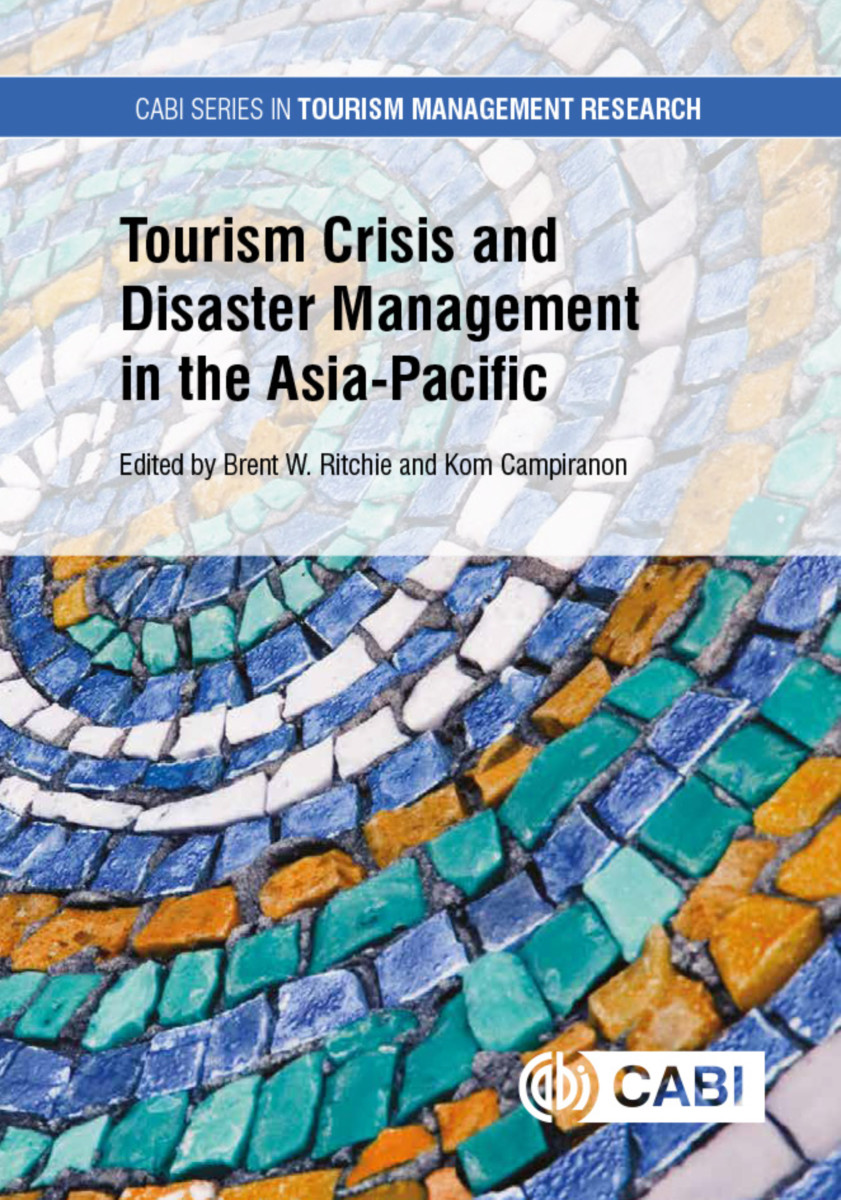Tourism Crisis and Disaster Management in the Asia-Pacific
- Publisher
CABI - Published
29th December 2014 - ISBN 9781780643250
- Language English
- Pages 284 pp.
- Size 6" x 9"
- Images figures & tables
- Publisher
CABI - Published
2nd December 2019 - ISBN 9781786395450
- Language English
- Pages 284 pp.
- Size 6" x 9"
- Images figures & tables
The Asia-Pacific area is notable as one of the fastest growing tourism regions and not surprisingly, tourism in this region has become the major driver of global tourism in general. Nonetheless, tourism industries in Asia Pacific have been challenged in recent years by a number of major crises and disasters including terrorism, outbreaks (e.g. SARS and Bird Flu), natural disasters (e.g. tsunamis, bushfires, flooding), and political crisis (e.g. protests and political instability).The aim of this book is to contribute to the understanding of crisis and disaster management generally, but with a specific focus on the Asia Pacific. With chapters contributed by international scholars and practitioners, this book discusses both theoretical and practical approaches toward successful crisis and disaster management.
INTRODUCTION
1. Introduction: Major themes and perspectives
PREVENTION AND PREPAREDNESS
2. Conceptualising organisational resilience in tourism disaster and crisis management
3. Theoretical perspectives on crimes against tourists The influence of organisational culture on crisis planning: An application of the competing value framework in Chinese hotels
4. How does crisis leadership influence effective crisis readiness?
5. Collaborative communication networks: An application in Indonesia
RESPONSE AND RECOVERY
6. Integrating tourism into disaster recovery management – The case of the Great East Japan earthquake and tsunami 2011
7. An analysis of the tourism industry’s management responses to political crises in Thailand
8. From tsunami to recovery: The resilience of Sri Lankan tourism industry
9. Analysing the impact of the 2011 natural disasters on the Central Queensland tourism industry
10. The global financial crisis’ influence on Chinese outbound travel market: A case study of the Shanghai regional market
11. The development of a trans-national tourism risk, crisis and recovery management network
12. The development of new tourism networks to respond to, and recover from the 2011 Christchurch Earthquake
RESOLUTION, LEARNING AND FEEDBACK
13. Ecotourism as a sustainable recovery tool after an earthquake
14. The devastation of Darwin: Representing the recovery and reconstruction of Australia after Cyclone Tracy
CONCLUSION AND FUTURE DIRECTIONS
15. Conclusions and future directions
Brent W. Ritchie
Brent W. Ritchie teaches at the University of Queensland, Australia.
Kom Campiranon
Kom Campiranon is with Dhurakij Pundit University, Thailand.


